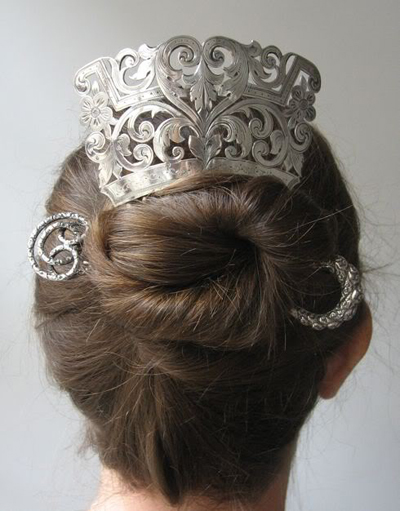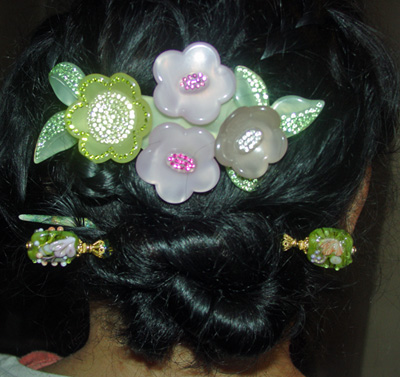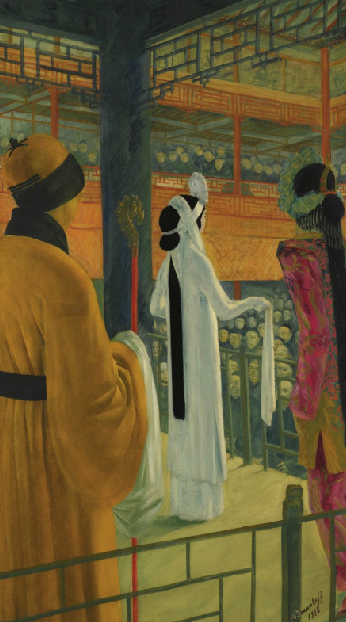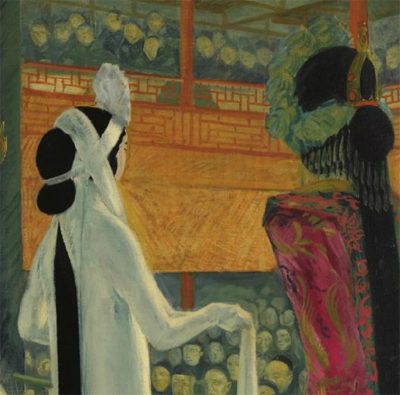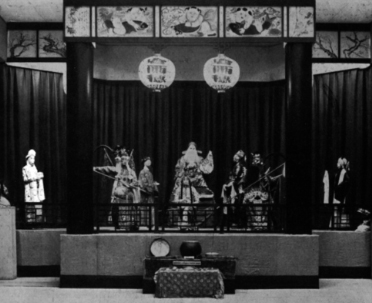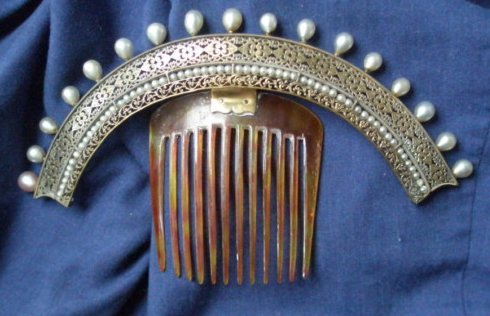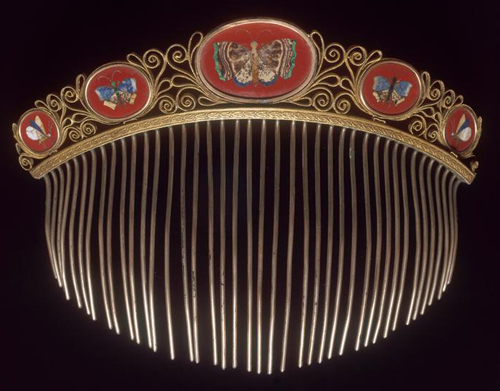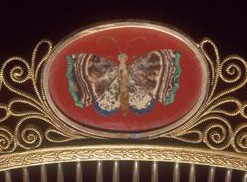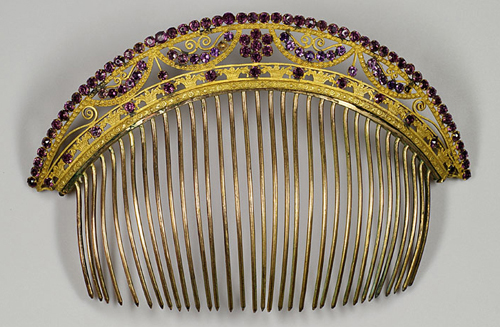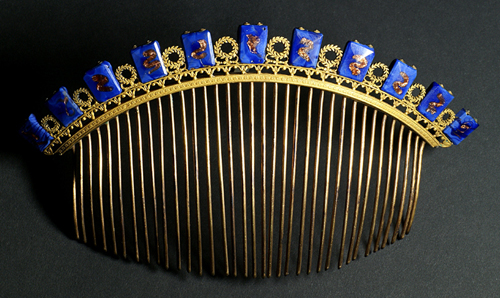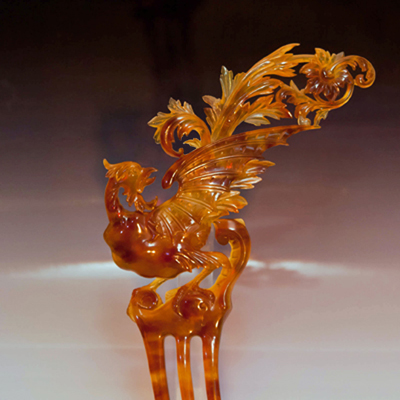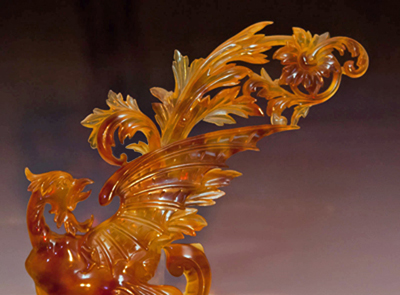Halos were the headpieces of sacred illuminated manuscripts. This Nativity Scene, with the Virgin Mary and two angels adoring the Christ child, is a cutting from a choir book. Painted in Milan, c. 1495, by Fr. Antonio da Monza, the Holy Family is depicted in a detailed, colorful landscape. The halos are created with liquid gold and unburnished gold leaf. This particular piece is being auctioned at Christie’s with an estimated price of $40,000 on July 6 as part of the Arcana Collection of Medieval and Renaissance Manuscripts.

Hair decorations were always symbiotically connected to the ideas and beliefs of their time. In these manuscripts, hallowed women illustrated Biblical text, which was set to Gregorian Chant.
Da Monza’s illustration accompanies the ‘P’ from the Introit ‘Puer natus est,’ from the Third Christmas Mass. Here is the full text in its original form.

Text Latin:
“Puer natus est nobis, et filius datus est nobis, cujus imperium super humerum ejus et vocabitur nomen ejus, magni consilii Angelus. Cantate Domino canticum novum quia mirabilia fecit.
Text English:
A child is born to us, and a Son is given to us:
Whose government is upon His shoulder:
and His Name shall be called, the Angel of Great Counsel.
Sing ye to the Lord a new canticle:
because He hath done wonderful things.
(This post is dedicated to Dr. William Entriken, Mrs. Susie Taylor, and Dr. Harold Rosenbaum.)












